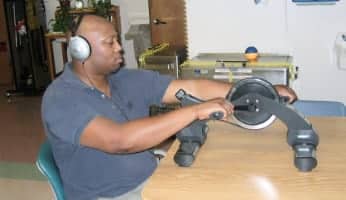Unlocking Lily’s Potential: How IM Therapy Improved Her Organization and Confidence

Home - Testimonials - Pediatric Testimonials - Unlocking Lily’s Potential: How IM Therapy Improved Her Organization and Confidence

Unlocking Lily’s Potential: How IM Therapy Improved Her Organization and Confidence
Lily is a 9-year-old girl diagnosed with sensory integration dysfunction.
Her parents noticed that Lily had difficulty attending in class, following directions, decreased coordination and difficulty tolerating different clothing fabrics.
Lily was seen for traditional OT for sensory integration issues and then took a short break from before beginning therapy three times a week using the Interactive Metronome.
Upon initial evaluation Lily had definite difficulty with auditory processing and probable difficulty with touch, multisensory, movement affecting activity level and behavioral outcomes of sensory processing.
Functionally, Lily was having difficulty paying attention when distraction was present, appeared to not hear what was being said to her, was sensitive to certain fabrics and was irritated by shoes and socks.
She had difficulty assuming and maintaining both supine flexion and prone extension postures.
Starting Interactive Metronome Training
During Lily’s initial use of the IM her frustration was evident, and sensory breaks were provided as needed. She tended to seek out the large therapy ball and bounce in between many exercises.
Her frustration was evident during any exercise where she had to cross midline, use her lower extremities or use both upper and lower extremities together. Her favorite exercise was putting 2 switches up on the Velcro wall and either sitting on the rolling stool that would also spin and hitting the switches or lying supine on the ball (so she was inverted) and reaching for the switches behind her.
When IM was initiated with Lily we had difficulty with earphones. “They make my ears sweat!” she said. She would wear them, but they seemed very distracting, as she would constantly touch them to adjust them.
She also was extremely distracted by “itchy palms” for the first 5-6 sessions. The itching was resolved by allowing Lily to have a wet paper towel that she could touch during the exercises, and performing wall push-ups between exercises. It was interesting to watch Lily when she was itchy because she would clap her hands much harder as if to dampen her sensory system.
Results After IM Training
After completing 17 therapy sessions incorporating the IM Lily was functionally a much more organized little girl.
At school, she was attending better during classroom activities and completing her work on time.
At Girl Scouts she was now earning badges which required memorization and direction following.
Her mother noted that at a party she was able to participate in the party games, and even won a game!
All of these things added up to a much more self confident little girl. Lily began asking to have friends over more often, and struggled less to complete homework every night.
We really saw an improvement in her ability to motor plan and execute smooth, controlled movements. Another big difference was that Lily’s right and left side seemed to be more integrated.
Standardized testing showed dramatic improvement.
Her initial assessment using the Beery VMI she showed an age equivalent of 5.11 years, which reflected in her handwriting (poorly formed letters). Her Beery VMI post-test jumped to an age equivalent of 11.2 years.
Her handwriting was beautiful and she now enjoyed drawing. Shapes were smooth and pressure on the pencil was even.
With such wonderful results Lily was discharged from OT at the end of the sessions with IM. Using IM as a modality during Lily’s treatment sessions really boosted her progress, and she and her parents were thrilled!
Wendy Harron, OTR/L
Alfred I. duPont Hospital for Children
Wilmington, DE




